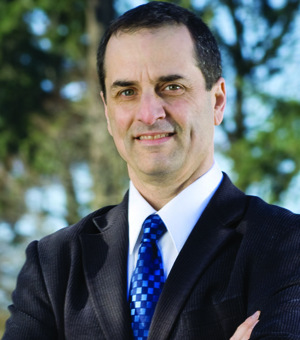By Eban Goodstein
In the three years leading to the ongoing Paris climate negotiations, the world has witnessed a truly big pivot. Back in 2012, business as usual global warming pollution was set to heat the world up 8 degrees F by century’s end. Neither of the two biggest polluters, the US or China, had put serious policies in place to address the crisis. But now, if the commitments being made here in Paris are carried through, that 8 degree number will be cut to 6 degrees F.
What changed?
First, the US came to the table. President Obama’s EPA mandated significant cuts from two big sectors, vehicles in 2012, and electric power in August of this year. With the US commitments made, China’s leaders stepped up, motivated by a rising middle class demanding an end to the worst urban air pollution in the world. China pledged to cap coal use by 2020, and cap global warming pollution starting in 2030.
In China, domestic politics focused on cleaning up the air drove the big pivot. In the US, by contrast, increasingly fierce partisan division over action on climate change has produced nothing but legislative gridlock on climate. Blocked in Congress, Obama had to turn to a 45-year old law, the Clean Air Act (CAA), as a basis for action.
Progress in Paris can thus be traced back to Republican President, Richard Nixon. In 1970, Nixon signed the CAA, and also the legislation creating the EPA. The original CAA had nothing to do with global warming. Back then, no one besides a few scientists had even heard of it. Instead, like in China today, the focus was on urban smog and toxic air pollution. The CAA gave the newly created EPA the authority and the responsibility to insure that industry was not putting dangerous materials into the air. The EPA went to work, and over the next two decades, air quality in US cities improved dramatically.
Fast forward to 2007. Climate change had been a global issue for two decades, and yet the US had passed no laws to regulate global warming pollution. Frustrated by the US failure to lead on climate, the Attorney General of Massachusetts, joined by other states, sued the EPA. The suit argued that carbon dioxide and other global warming gasses were “dangerous pollutants”, and therefore, under the 1970 CAA, the EPA was obligated to start regulating global warming emissions. The case went to the US Supreme Court, and in a 5-4 decision, the Court agreed: global warming gasses were indeed dangerous pollutants, and the EPA was ordered to regulate. As in many recent cases, Anthony Kennedy, a Reagan appointee, was the swing vote.
This decision, leveled against the Bush EPA, led eventually to the 2012 Obama EPA regulation requiring a doubling of the fuel efficiency of US cars, to 55 MPG by 2025. And in 2015, the EPA finalized regulations requiring the electric power sector to reduce emissions 32% below 2005 level by 2030. Together, these two US commitments brought China to the table, and have led in turn to the international agreement now being ratified in Paris that can shave 2 degrees off of the planetary warming our grandkids will experience.
A big kiss then goes out from Paris to President Nixon and Judge Kennedy. These Republican politicians represent a historic, deep bipartisan American tradition supporting environmental protection and resource conservation. Lost as we have become in the bitter partisanship of the Tea-Party era, it is hard to imagine that as recently as 2008, both major contenders for the Republican Presidential nomination, McCain and Romney, had been advocates of regulatory action on climate. Pragmatic bipartisan co-operation on environmental protection was a proud hallmark of US politics throughout the 20th century.
In the face of the civilizational challenge of a destabilized climate, can we recapture this tradition of American support across party lines for stewardship of the earth? To sustain momentum, we have to. In the short term, Obama’s Paris pledge can be undone as early as November 2016, depending on the outcome of US elections. Congress could exempt global warming pollution from the Clean Air Act, or a President opposed to climate action could slow-walk implementation of the EPA global warming regulations. If the US backs down from Paris, so too will China, India, and the rest of the world.
Over the medium term, we need to get 6 degrees F down to 4 degrees. The Clean Air Act, while a good start, cannot provide deep enough cuts from the US to get us there. Post 2020, clean energy votes from both parties, in both Houses of Congress, will be needed to avert the catastrophic consequences of a planet headed to 6 degrees F and beyond.
Why 2020? And how do we get from a deeply partisan here to a bipartisan there? More on that in my next post.
Eban Goodstein is an economist and is Director of the MBA in Sustainability and the Center for Environmental Policy at Bard College in Annandale-on-Hudson, NY.

